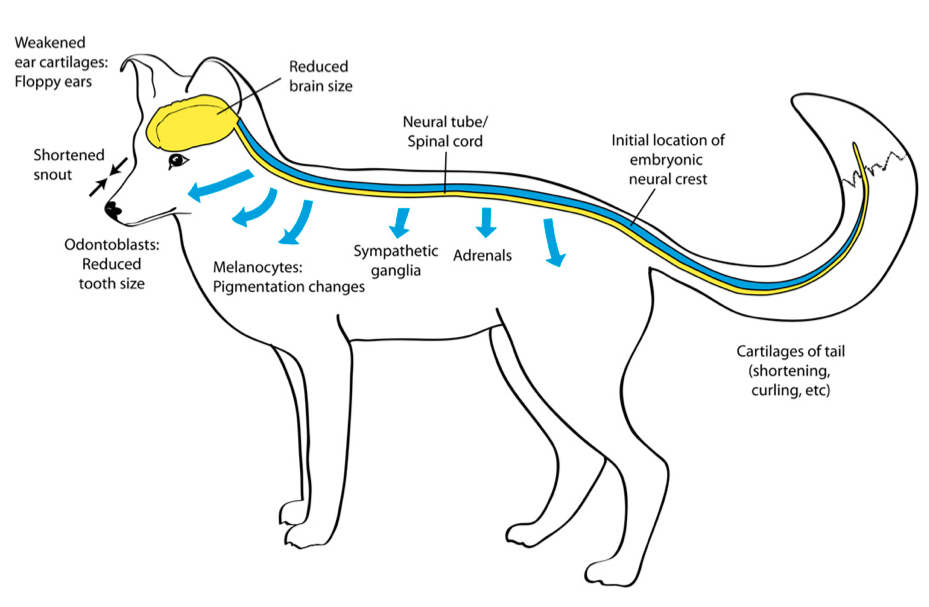How did dogs get such floppy ears and sheep become so docile? And why did cats develop such weird adrenocorticotropic hormone levels?
The uncannily consistent changes in the appearance and behavior of members of a species as they are domesticated have puzzled scientists since Charles Darwin pondered “domestication syndrome” more than a century ago. A paper published Sunday in Genetics lists some of the similar changes that mammalian and even bird species undergo as they come under the control of human masters:
- Prolonged juvenile behavior
- Reduced brain size
- Increased docility
- Loss of coat colors
- Shrunken teeth
- Changes in facial, tail, and ear shapes
- More frequent female breeding cycles
- Specific hormonal changes
The authors of the paper describe a hypothesis that they say could help explain all these manifestations of domestication syndrome. They propose there’s a reduction in the embryonic production of an influential type of stem cell that’s found only in vertebrate animals. Neural crest cells appear during early embryogenesis at the neural tube, which develops into the brain and spinal cord, and then they migrate through the growing body, giving rise to a variety of cells and tissues.
Among other things, the neural crest cells give rise to the adrenal glands, which play roles in fear and stress responses. The scientists assume that a reduction in fear and stress is a prerequisite to the domestication and captive breeding of a species.
“But the [domestication syndrome] as a whole, with its diverse array of affected morphological traits, clearly cannot be caused simply by alterations of adrenal function,” the scientists wrote in their paper. “What, therefore, might be the common factor? What all of these diverse traits, including the adrenals, share is that their development is closely linked to neural crest cells.”
This illustration shows where the neural crest is located in the early embryo; blue arrows show migration of its cells:
(Chart: Genetics)

The hypothesis remains just that—a hypothesis. But the paper describes experiments that could show whether reducing the number or efficacy of neural crest cells produces traits that are common in domesticated animals. Tests could include comparisons of neural crest cell populations in the embryos of wild and domestic species. Scientists could transplant neural crest cells from the embryos of domesticated animals into wild ones. It might also be possible to produce populations of lab rats that have fewer neural crest cells than is normal.
What the hypothesis cannot easily explain, however, is why genes coding for reduced neural crest cells would be maintained in so many wild species, ready for genetic selection under the unusual pressures of domestication. “We’re postulating that this condition comes about from mutations that are mildly defective in wild natural populations,” says Adam Wilkins, a Berlin-based geneticist who co-authored the paper with Harvard University primatologist Richard Wrangham and University of Vienna cognitive biologist Tecumseh Fitch. “These mutations must, we infer, be reasonably common.”





